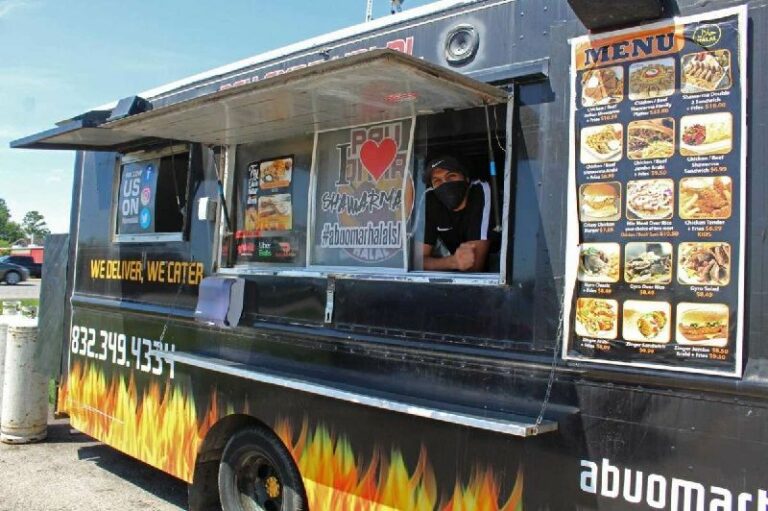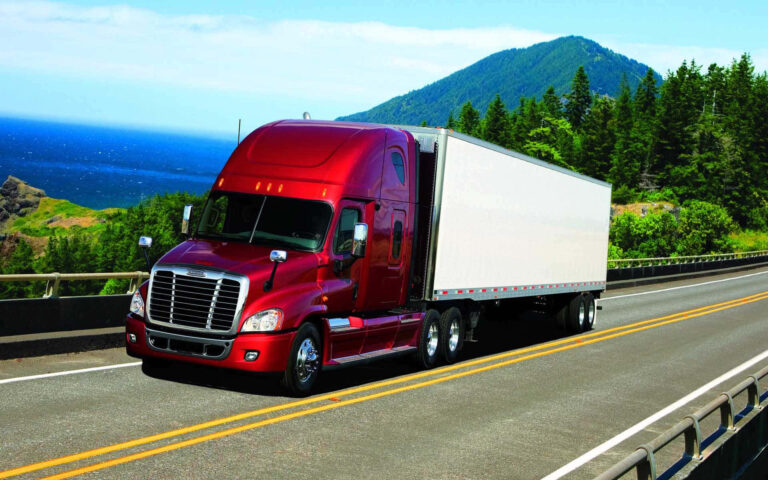U-Haul Trailer Rental: Your Comprehensive Guide to DIY Hauling and Moving
U-Haul Trailer Rental: Your Comprehensive Guide to DIY Hauling and Moving cars.truckstrend.com
Moving, hauling, or transporting goods doesn’t always require hiring professional movers or purchasing an expensive trailer. For millions, the solution lies in the accessible, flexible, and cost-effective services offered by U-Haul Trailer Rental. As a cornerstone of the do-it-yourself (DIY) moving industry, U-Haul empowers individuals to take control of their transportation needs, whether it’s a cross-country relocation, a local furniture haul, or the transport of a cherished vehicle.
This comprehensive guide delves into every facet of U-Haul trailer rentals, from understanding the diverse range of options available to navigating the rental process, ensuring safety, and maximizing value. By the end, you’ll be equipped with the knowledge to make your next hauling endeavor a smooth and successful one.
U-Haul Trailer Rental: Your Comprehensive Guide to DIY Hauling and Moving
Why Choose U-Haul Trailer Rental? Benefits at a Glance
The popularity of U-Haul trailer rentals stems from a myriad of compelling benefits that cater to a wide array of personal and commercial needs:
- Cost-Effectiveness: Compared to hiring full-service movers or purchasing a trailer outright, U-Haul rentals offer significant savings. You only pay for the time you need the equipment, avoiding the depreciation, maintenance, and storage costs associated with ownership.
- Flexibility and Convenience: With thousands of locations across North America, U-Haul provides unparalleled convenience for pick-up and drop-off. Options for one-way rentals (picking up in one city and dropping off in another) or in-town rentals (picking up and dropping off at the same location) cater to diverse travel plans.
- Variety of Options: U-Haul boasts an extensive fleet of trailers designed for specific purposes, ensuring you can find the perfect fit for your cargo, no matter its size or type.
- DIY Control: For those who prefer to manage their own move or transport, U-Haul trailers offer complete control over packing, loading, and transit schedules.
- Accessibility: U-Haul makes trailer rental accessible even if you don’t own a heavy-duty truck. Their system helps determine if your personal vehicle is capable of towing the desired trailer, and they also offer hitch installation services.
- Support and Safety Resources: U-Haul provides comprehensive resources, including online guides, videos, and in-person assistance, to ensure safe towing practices and proper equipment usage.

Understanding the U-Haul Trailer Fleet: Types and Uses
U-Haul categorizes its trailers primarily into three main types, each designed for specific hauling requirements:
-
Cargo Trailers:
These are enclosed trailers, ideal for protecting your belongings from weather elements, dust, and debris. They are perfect for moving household goods, furniture, boxes, and other items that require protection.- Sizes: Commonly available in 4’x8′, 5’x8′, 5’x10′, and 6’x12′.
- Typical Uses: Apartment moves, small home relocations, transporting sensitive equipment, protecting valuables during transit. The 6’x12′ tandem axle cargo trailer is the largest enclosed option, offering superior stability for heavier loads.

-
Utility Trailers:
Utility trailers are open-top trailers, featuring low sides and often equipped with a ramp for easy loading of wheeled items. They are incredibly versatile for hauling odd-shaped items, landscaping materials, construction supplies, or recreational vehicles.- Sizes: Popular sizes include 4’x7′, 5’x8′, 5’x9′ with a ramp, and 6’x12′ with a ramp.
- Typical Uses: Hauling lumber, yard waste, appliances, motorcycles, ATVs, riding lawnmowers, or even small construction equipment. The integrated ramp on certain models significantly simplifies loading and unloading.
-
Car Carriers (Auto Transport & Tow Dolly):
Designed specifically for transporting vehicles, U-Haul offers two primary options:- Auto Transport: This is a full trailer where all four wheels of the towed vehicle are off the ground. It’s the safest and most secure option for longer distances, valuable cars, or vehicles with specific towing requirements (e.g., all-wheel drive).
- Tow Dolly: This option lifts only the front wheels of the towed vehicle off the ground, with the rear wheels remaining on the road. It’s a more economical choice, suitable for shorter distances and front-wheel-drive vehicles.
- Typical Uses: Relocating a personal vehicle during a move, transporting a non-running car, or bringing a project car home.
The U-Haul Trailer Rental Process: A Step-by-Step Guide
Renting a U-Haul trailer is a straightforward process, but careful planning ensures a hassle-free experience.
- Assess Your Needs: Before anything else, determine what you’re moving and how much it weighs. This will guide your trailer size selection. Crucially, identify your towing vehicle (make, model, year) and its towing capacity.
- Verify Towing Vehicle Capability: U-Haul has a sophisticated system that helps you determine if your vehicle is compatible with the desired trailer. Key requirements include:
- Hitch Receiver: Your vehicle must have a properly installed hitch receiver with the correct class rating (Class I, II, III, etc.) to handle the Gross Vehicle Weight Rating (GVWR) of the loaded trailer.
- Hitch Ball: The correct size hitch ball (typically 1-7/8" or 2") must be installed.
- Lighting Connections: A functional wiring harness (usually 4-flat or 7-round) is essential for trailer brake lights, turn signals, and running lights. U-Haul can assist with hitch and wiring installation if needed.
- Towing Capacity: Consult your vehicle’s owner’s manual for its maximum towing capacity. Never exceed this limit.
- Reserve Your Trailer:
- Online is Recommended: U-Haul’s website (uhaul.com) allows you to select trailer type, pick-up/drop-off locations, dates, and instantly see pricing. This is the most efficient way to reserve.
- In-Town vs. One-Way: Specify if you need to return the trailer to the same location (in-town) or a different one (one-way). One-way rentals are generally more expensive due to logistics.
- Book in Advance: Especially during peak moving seasons (late spring to early fall, end of month), reserving well in advance is crucial to secure your preferred trailer.
- Pick Up Your Trailer:
- Bring Essentials: Driver’s license, reservation details, and a valid payment method.
- Inspection: A U-Haul representative will assist with hooking up the trailer and perform a safety inspection, including lights, tires, and coupler. You should also thoroughly inspect the trailer for any existing damage and ensure it’s noted on the rental agreement.
- Paperwork: Review and sign the rental agreement, understand the terms, and consider insurance options.
- Load and Tow Safely:
- Loading: Distribute weight properly – approximately 60% of the weight should be in the front half of the trailer, closest to the towing vehicle. Keep heavy items low and centered to maintain a low center of gravity. Secure all items to prevent shifting during transit.
- Towing: Drive slower than usual, allow for increased braking distances, and make wider turns. Periodically check your mirrors to ensure the trailer is tracking correctly.
- Return Your Trailer: Return the trailer to the designated U-Haul location on time and in clean condition to avoid additional charges.
Important Considerations Before You Rent
To ensure a safe and efficient rental experience, keep the following critical points in mind:
- Towing Vehicle Compatibility is Paramount: Do not guess your vehicle’s towing capacity or hitch requirements. U-Haul’s system is designed to prevent unsafe combinations, but it’s your responsibility to know your vehicle’s limits. Overloading or using an incompatible vehicle is extremely dangerous.
- Safety First:
- Pre-Trip Inspection: Before every drive, check tire pressure, lug nuts, coupler connection, safety chains, and all lights.
- Load Distribution: Improper weight distribution is the leading cause of trailer sway and loss of control.
- Speed: Maintain a safe speed, typically below highway limits, especially with a loaded trailer.
- Mirrors: Ensure your vehicle’s mirrors provide adequate visibility around the trailer.
- Insurance Options:
U-Haul offers supplementary insurance plans like "Safemove" (for cargo/utility trailers) and "Safetow" (for car carriers). These plans can cover accidental damage to the trailer, your belongings inside the trailer, and provide supplemental liability coverage. While your personal auto insurance policy might offer some coverage, it’s crucial to confirm with your provider before renting, as many policies have limitations on trailer coverage. U-Haul’s options often provide peace of mind and more comprehensive protection. - Rental Duration and Pricing Factors:
U-Haul pricing is dynamic and influenced by several factors:- Trailer Type and Size: Larger and specialized trailers are more expensive.
- Rental Duration: Daily rates apply for in-town rentals; one-way rentals are priced per trip.
- Location: Prices can vary based on demand and supply in specific geographic areas.
- Availability: During peak seasons, higher demand can lead to slightly higher prices.
- One-Way vs. In-Town: One-way rentals typically cost more due to the logistical challenge of repositioning the trailer.
- Additional Equipment: Dollies, moving blankets, and other accessories are extra.
- Fees & Taxes: Environmental fees, taxes, and other surcharges will apply.
Estimated U-Haul Trailer Rental Prices
Please note that all prices are estimates and can vary significantly based on the factors mentioned above (location, availability, demand, rental duration, one-way vs. in-town, and specific dates). Always check the official U-Haul website for the most accurate and up-to-date pricing for your specific needs.
| Trailer Type | Size (Approx.) | In-Town Rental (Daily Est.) | One-Way Rental (Est. Per Trip) | Max Load Capacity (Est.) | Typical Use | Notes |
|---|---|---|---|---|---|---|
| Cargo Trailers | Enclosed, protect contents from weather. | |||||
| 4’x8′ | $14.95 – $24.95 | $70 – $150+ | ~1,600 lbs | Small moves, boxes, light furniture. | Requires Class 1 (2,000 lbs) hitch minimum. | |
| 5’x8′ | $18.95 – $29.95 | $80 – $180+ | ~1,800 lbs | Small to medium moves, appliances, furniture. | Most popular size. Requires Class 1 (2,000 lbs) hitch minimum. | |
| 5’x10′ | $28.95 – $39.95 | $90 – $220+ | ~2,000 lbs | Medium moves, multiple rooms of furniture. | Requires Class 2 (3,500 lbs) hitch minimum. | |
| 6’x12′ | $34.95 – $49.95 | $100 – $280+ | ~2,500 lbs | Larger moves, commercial use, bulky items. | Largest enclosed trailer. Requires Class 2 (3,500 lbs) hitch minimum. Equipped with tandem axle for stability. | |
| Utility Trailers | Open-top, great for odd-shaped items, yard waste, construction materials. | |||||
| 4’x7′ | $14.95 – $24.95 | $70 – $150+ | ~1,600 lbs | Small items, garden waste, ATVs. | ||
| 5’x8′ | $18.95 – $29.95 | $80 – $180+ | ~1,800 lbs | General hauling, furniture, motorcycles. | ||
| 5’x9′ (Ramp) | $24.95 – $34.95 | $90 – $200+ | ~1,600 lbs | ATVs, motorcycles, lawnmowers, wheeled equipment. | Features a fold-down ramp for easy loading. | |
| 6’x12′ (Ramp) | $34.95 – $49.95 | $100 – $280+ | ~2,500 lbs | Large equipment, multiple motorcycles, small vehicles. | Tandem axle for stability, heavy-duty ramp. Requires Class 2 (3,500 lbs) hitch minimum. | |
| Car Carriers | For transporting vehicles. | |||||
| Tow Dolly | $39.95 – $59.95 | $100 – $250+ | ~3,000 lbs | Front-wheel drive cars, shorter distances. | Lighter, more affordable. Requires Class 2 (3,500 lbs) hitch minimum. Car’s rear wheels on ground. | |
| Auto Transport | $54.95 – $79.95 | $150 – $400+ | ~5,000 lbs | All types of cars, longer distances, valuable vehicles. | Full trailer, all four wheels of the towed vehicle off the ground. Requires Class 3 (5,000 lbs) hitch minimum. Heavier towing vehicle required. |
Disclaimer: All prices are estimated daily rates for in-town rentals and estimated total costs for one-way rentals, subject to change based on location, availability, demand, rental duration, and specific dates. Additional fees (environmental, taxes, insurance) are not included and will apply. Always check the official U-Haul website for the most accurate and up-to-date pricing for your specific needs.
Tips for a Smooth U-Haul Trailer Rental Experience
- Book Early: Especially for one-way rentals or during peak seasons, booking several weeks in advance ensures availability and potentially better rates.
- Inspect Thoroughly: Before leaving the U-Haul lot, do your own walk-around. Check tire pressure, lights, and look for any existing damage. Document it with photos if necessary.
- Understand Your Vehicle’s Limits: Do not attempt to tow a trailer that exceeds your vehicle’s stated towing capacity. Safety first!
- Pack Smart: Proper weight distribution is critical. Pack heavy items first, low to the floor, and centered over the trailer’s axle. Secure everything with ropes or straps.
- Practice Driving: If you’re new to towing, find an empty parking lot and practice turning, backing up, and braking.
- Stay Connected: Keep your phone charged and handy for navigation and in case you need to contact U-Haul roadside assistance.
- Return on Time: Late returns can incur additional fees. Plan your trip to allow ample time for return.
Potential Challenges and Solutions
While U-Haul trailer rentals are generally straightforward, some challenges can arise:
- Challenge: Limited Availability: During peak times, your desired trailer might not be available at your preferred location.
- Solution: Book well in advance. Be flexible with your pick-up dates or consider alternative U-Haul locations nearby.
- Challenge: Vehicle Compatibility Issues: Your personal vehicle might not meet the towing requirements for the trailer you need.
- Solution: Use U-Haul’s online towing guide before reserving. If your vehicle lacks a hitch or proper wiring, U-Haul offers installation services, but schedule this in advance.
- Challenge: Towing Anxiety: Driving with a trailer can be daunting for first-timers.
- Solution: Watch U-Haul’s safety videos, read their towing guides, and practice in a safe, open area before hitting the road. Start with lighter loads and shorter distances.
- Challenge: Damage or Breakdown: Accidents happen, or equipment can malfunction.
- Solution: Purchase U-Haul’s optional insurance for peace of mind. Familiarize yourself with their roadside assistance number and procedures.
Frequently Asked Questions (FAQ)
Q: Do I need a special driver’s license to tow a U-Haul trailer?
A: In most U.S. states and Canadian provinces, a standard Class D (or equivalent) driver’s license is sufficient as long as the combined weight of your vehicle and the loaded trailer does not exceed a certain limit (which is typically very high and rarely reached by U-Haul’s consumer trailers).
Q: What kind of hitch do I need for a U-Haul trailer?
A: You’ll need a hitch receiver properly installed on your vehicle, along with a hitch ball of the correct size (usually 1-7/8" or 2" for U-Haul trailers). Your hitch must also have a sufficient weight rating.
Q: Can I tow a U-Haul trailer with my SUV or sedan?
A: Potentially, yes. Many SUVs and even some sedans have sufficient towing capacity for smaller U-Haul trailers. U-Haul’s online reservation system will verify if your specific vehicle model is approved to tow the chosen trailer type.
Q: Is insurance required when renting a U-Haul trailer?
A: While not always legally required, it is highly recommended. Your personal auto insurance may or may not cover rented trailers; it’s essential to check with your provider. U-Haul offers "Safemove" and "Safetow" plans that provide coverage for trailer damage, contents, and liability.
Q: Can I drop off the trailer at a different U-Haul location?
A: Yes, if you selected a "one-way" rental during your reservation. You must specify the drop-off location when booking. "In-town" rentals require you to return the trailer to the original pick-up location.
Q: What if my vehicle doesn’t have a hitch or proper wiring?
A: U-Haul offers professional hitch installation services at many of its locations. It’s best to schedule this service in advance of your rental.
Q: What’s the difference between a Tow Dolly and an Auto Transport?
A: A Tow Dolly lifts only the front wheels of the towed vehicle, leaving the rear wheels on the ground. An Auto Transport is a full trailer that carries all four wheels of the towed vehicle completely off the ground. Auto Transports are generally safer and preferred for longer distances or more valuable vehicles.
Q: How do I load a trailer properly to avoid sway?
A: Load approximately 60% of the weight in the front half of the trailer, closest to the towing vehicle. Keep heavy items low to the floor and centered over the axle. Distribute weight evenly from side to side.
Conclusion
U-Haul trailer rental services offer an invaluable resource for individuals seeking a flexible, cost-effective, and empowering solution for their moving and hauling needs. By understanding the various trailer types, diligently following the rental process, prioritizing safety, and considering the practical advice outlined in this guide, you can confidently embark on your DIY journey. With proper planning and adherence to U-Haul’s guidelines, your next U-Haul trailer rental experience will be not just successful, but genuinely empowering, putting you in the driver’s seat of your own move.




